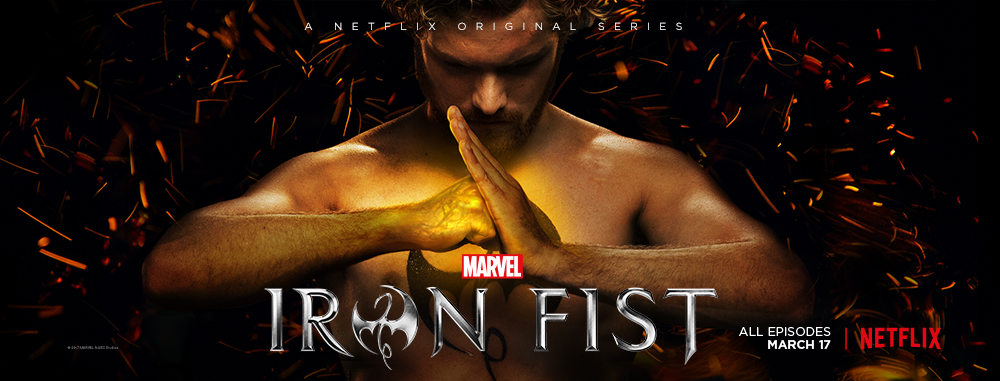
—
 Last week, the co-creator of the Marvel character Iron Fist went on record in regards to the new Netflix series of the same name, to address the “whitewashing controversy swirling around the show.” While comics were not designed to be a platform for social change, structural racism is undeniably baked into the fabric of our culture, including comics. When opportunities present themselves to add equity to the cultural landscape, we should take them.
Last week, the co-creator of the Marvel character Iron Fist went on record in regards to the new Netflix series of the same name, to address the “whitewashing controversy swirling around the show.” While comics were not designed to be a platform for social change, structural racism is undeniably baked into the fabric of our culture, including comics. When opportunities present themselves to add equity to the cultural landscape, we should take them.
This is one such opportunity.
Born in the deep south in 1940, Roy Thomas came of age in a time when separate but equal was the law of the land. He began working for DC comics the year the Civil Rights Act was passed. He accepted his first long-term assignment at Marvel Comics in 1967, the year Loving v Virginia went before the Supreme Court. He is unquestionably a comics legend, having created (or had a part in creating) fabled characters such as Man-Thing, Ultron, Carol Danvers, Doc Samson, The Vision, Adam Warlock, Ghost Rider, and the aforementioned Iron Fist.
|
Roy Thomas happened to have been raised in an intellectual climate when all of these tropes were socially acceptable.
|
In regards to the whitewashing controversy, Thomas makes the point that the title character, Danny Rand, is originally caucasian. While this is true, his defense essentially boils down to defending a time when racism was more socially acceptable. This line of reasoning fails to address the underlying trope of the white savior, wherein a person of European descent enters a “primitive culture,” learns their ways better than the indigenous peoples, and becomes their leader.
Despite its popularity, this trope is especially harmful, as it perpetuates centuries old theories of genetic superiority and inferiority, both moral and physical. Which begs the question: if we are telling the story of a fictional character who’s superpower is mastery over mystical Asian martial arts, is their ethnicity–or even their gender–essential to the story?
♦◊♦
First published in 1974, the character Iron Fist came to popularity at the height of the Kung-Fu craze in American media, led by Bruce Lee. According to canon, the mantle of the Iron Fist has been around for at least 5,000 years. The title is passed on generationally, Danny Rand being the 66th person to hold the title. While this kind of cultural appropriation was commonplace forty years ago, as we actually make an effort to be more culturally aware in 2017, the ethnicity of the main character adds nothing to the story.
A great example of a character’s ethnicity being vital is the Captain America story, Truth: Red, White and Black, when Steve Rogers finds out that, much like the Tuskegee Airmen, the super soldier formula had been tested on black soldiers first. When it finally succeeded, the government made a choice not to give the title of Captain America to Isaiah Bradley, the only survivor of the super-serum program, as it was the 1940s, and racism was still rampant. Steve Rogers had to be white, because that is what would have been acceptable at the time.
Contrast this with SpiderMan, who you only know is white because you know his secret identity. Under the mask, he could be anyone, as is pointed out in a court scene where he’s asked why J. Jonah Jameson hates him so much:
“The real reason Johan hates me” Spidey says “is because I’m black.”
Another great example is the difference in how Superman and Martian Manhunter are received. Both are literal aliens. Why is one more trusted than the other?
Again, nothing about those characters identities is intrinsic to their ethnicity. Which makes the appropriation of culture in the case of Iron Fist more egregious.
♦◊♦
The White Savior trope may be the most glaring example of cultural appropriation in modern media. A short list of recent examples includes:
The trope is redundant. Native cultures are relegated to background material (or forbidden love interests) in their own stories, reinforcing both the helplessness of people of color, and satisfying the desire of the writers to see a romanticized version of themselves.
Ray Thomas happened to have been raised in an intellectual climate when all of these tropes were socially acceptable. What was good enough then, when separate water fountains and segregation and redlining was the law of the land, just isn’t good enough today. There are a wealth of European myths and legends – Celtic, Greco-Roman, Russian, Germanic, Nordic, etc. – to pull from, without resorting to cultural appropriation. And while it is true that new characters can be created at any time, existing characters have a generational advantage in terms of recognition.
Again, comics are not meant to be a medium for social change. That doesn’t mean they can’t be. Untangling centuries of structural racism and how non-white cultures are represented in film, television, books, and other pop culture, is as good a place as any to start. We’re trying to add equity where it’s appropriate, to step forward into the light together.
—

The role of men is changing in the 21st century. Want to keep up? Get the best stories from The Good Men Project delivered straight to your inbox, here.
—
Feature Photo Credit: Flickr
The post Iron Fist: A Teachable Moment appeared first on The Good Men Project.
(via The Good Men Project)





